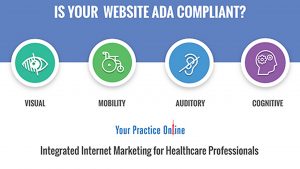The American Disabilities Act better known as the ADA was enacted in the last century, in 1990 to be exact. Its main purpose was to provide equal access and opportunities to people with disabilities living within the United States. A key term that was and has been used in its interpretation and implementation is ‘public accommodation’. A layman’s understanding may consider this only from the perspective of a physical building or an organization’s premises. However, ADA compliance has evolved over the years, advancing with technology and the increased use of the internet. Currently, websites and online platforms also need to be compliant with certain standards and requirements to make them accessible to people with disabilities.
With the changing platform, you might need to constantly check that your website is ADA compliant. Failure can cause you been pulled down and a lawsuit being processed against you. To avoid such a scenario, why don’t you check out this ADA compliance website checker?
The ADA Compliance Website Requirements

Rulemaking in the country is the mandate of the Department of Justice. With regards to the ADA compliance and websites, the set of guidelines to be considered is the Web Content Accessibility Guideline, WCAG. As of the time of writing this article, the applicable version of the WCAG is version 2.1. There are three sections to the latest version: A, AA, and AAA.
We would ask that you read the WCAG 2.1 for a complete and deeper understanding of the guidelines. Below is a limited sample of the principles that are recommended by the WCAG.
- Perceivable. Users must be able to interact easily and understand the information being presented. The website can use text alternatives, captions as well as content with audio.
- Operable. Navigation through the website must easy. The website should be operable by both the keyboard and the mouse independently. The website can also help users to move through the content.
- Understandable. The text used must be readable. The content must be clear and sequential. In case the user makes mistakes, the website should be able to correct them and offer solutions.
- Robust. Technology is always advancing. Your website should have the capability of being accessible with new technologies and other agents.
Testing
With websites, it is always recommended for you to have some beta-testing done. This will require calling in people with disabilities to review and give their unbiased comments on your website. One of the most critical aspects that they should look into is accessibility. The feedback provided should be morphed into action points that will make your website ADA compliant and accessible.
As a show of good faith, you should include and share the process of your ADA compliance on your web accessibility policy. A website cannot be 100% full-proof and at times it might have some issues when it comes to accessibility. Sharing of such information can put off claims of discrimination not only be legit parties but also by malicious parties.
